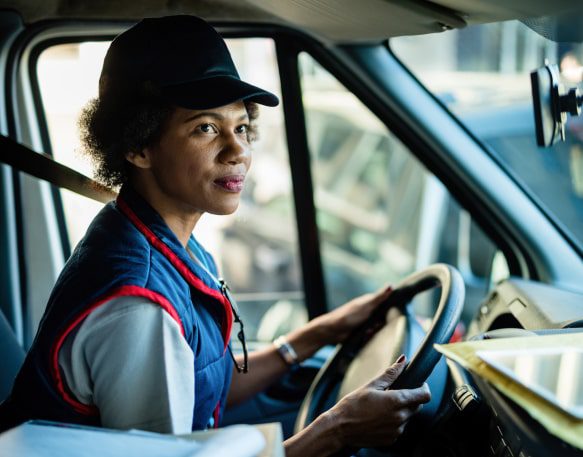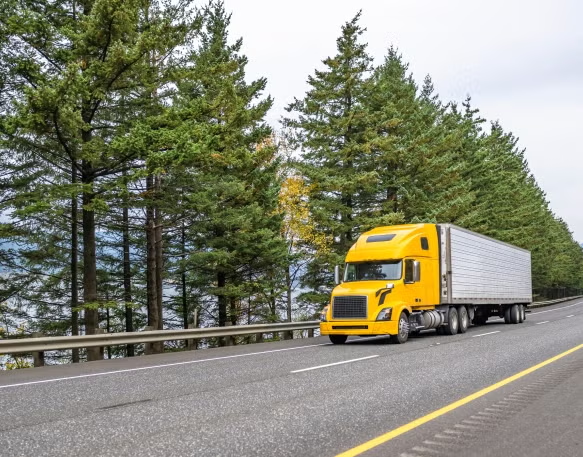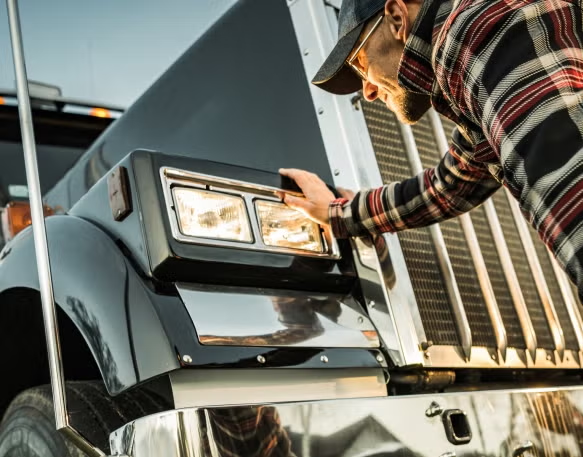Historically, the trucking industry has been dominated by men and stereotypes that limited the idea of who could be a truck driver. Progress is steadily being made on this front: according to the Women in Trucking (WIT) Association, figures from the Department of Labor show a staggering 88% increase in female truck drivers since 2010, and the truck industry at large has become much more inclusive towards women over the years.
Even so, you may find yourself asking: what percentage of truck drivers are female? The truth is that, unfortunately, even with ongoing growth, women still only make up about 13.7% of all truck drivers in the United States, even though they make up approximately half of the total workforce. While that’s an increase from previous years, it still reflects a vast source of untapped potential for the industry.
The fact that this particular workforce has been mostly men doesn’t mean that women can’t also succeed and thrive in trucking. Women truck drivers bring a unique perspective and skill set that has the potential to bring the trucking industry to new heights.
In this article, we’ll go over the current state of women in the trucking industry, explain why more women truck drivers are a good thing, cover the challenges that female truck drivers face, and provide tangible steps for how women can get started with trucking.
The current state of the industry for women truck drivers
The percentage of women who fill the role of your typical over-the-road (OTR) truck driver is 13.7%, but it’s also important to recognize that women play many different parts across the industry. According to the 2022 Women In Trucking Index, the percentages of women in key roles in the transportation industry are as follows:
- C-suite executives: 33.8%
- Company leaders: 39.6%
- Board of directors: 31%
- HR/Talent management: 74.9%
- Technicians: 3.7%
- Dispatcher roles: 44.7%
- Safety roles: 40.5%
The data reveals a marked and significant increase from 2019, where they found 10% of all truckers were women truck drivers. That itself was an increase from 2018 when women truck drivers only made up 7.89% of the total. In explaining the reasons for this consistent rise, the index posits that women have many positive traits that are quite conducive to being efficient, reliable, and safe truck drivers.
On average, women are less likely to take risks, which makes them safer drivers than most men. Women truck drivers also tend to possess stronger multitasking and organizational skills and are also strong communicators with qualities like patience and the ability to focus for long periods of time, all of which make them a great fit for truck driving.
And those aren’t just vague statements. In 2018, the American Transportation Research Institute (ATRI) released its Crash Predictor Model Report, which showed that men are 20% more likely to be in a crash than female truck drivers. It provided even more eye-opening insights, revealing that, compared to female truck drivers, male truck drivers have:
- An 88% greater risk of a reckless driving conviction
- A 78% greater risk of a seat belt violation
- A 73% greater risk of a traffic signal conviction
- A 70% greater risk of a speeding conviction
The main takeaway here is that having more women truck drivers will not only improve diversity and address gaps in the workforce – it will also undoubtedly improve the safety of the trucking industry as a whole.
Fortunately, the industry is making efforts to address the imbalance. The WIT Index cites an industry-wide push to hire more female truck drivers in 2018 as the catalyst for the meaningful progress that has occurred in recent years. In addition, Ellen Voie, president and CEO of Women in Trucking, claims that the pandemic has also led to an influx of women truck drivers. Many women found themselves without a job, particularly in areas like the service industry in hotels, restaurants, and so on at the same time that the trucking industry was in a unique situation where there was (and continues to be) a demand for more truck drivers. It was an easy transition for many women to make.
The challenges facing female truck drivers
Many of the challenges facing women in truck driving today are a result of long-standing stereotypes, prejudices, and social issues regarding gender roles. There was even a time when women truck drivers were considered taboo, and even though that taboo is fortunately now gone, many may still associate trucking with masculinity.
And while perspectives are changing and it is much more socially acceptable for women to be truck drivers, this underrepresentation translates into a number of barriers and obstacles that women must face if they want to succeed as a trucker.
All of this can contribute to the fact that many women feel a lack of confidence in becoming truck drivers or feel that training is inadequate for women. Female truck drivers also regularly feel a need for social circles and networks specifically for women in truck driving to help them learn and grow and connect with like-minded industry professionals. These circles are frequently missing and, in many cases, a lack of female mentors or volunteers can leave female truck drivers feeling alienated and dissatisfied with their jobs.
In addition, many of the ways the trucking industry is organized are unfavorable for women. In some instances, policies and procedures can discriminate against women. For example, more restrictive hours and routes can prove discriminatory. Ergonomically, the way trucks are designed is also uninclusive towards women. Trucks are typically designed with a large man in mind, which makes it difficult for many women to reach the pedals and operate their vehicles properly.
And, of course, one of the biggest concerns for female truck drivers is gender bias and harassment. According to a whitepaper by WIT, most respondents said that the trucking industry is a fair and safe one for women to be employed, but over 50% still reported falling victim to harassment at some point in the past or knowing someone who has. Nearly 70% of respondents stated that they were verbally abused on the job at least once, with 49% reporting being verbally threatened and 57% reporting unwanted physical advances.
There are steps that women truck drivers can take to ensure that they’re as safe as possible on the road – such as knowing their vehicle and pre-planning their route – so that they can recognize when something goes wrong and address it immediately. However, it’s also up to regulators, trucking companies, and carriers to implement policies and rules that protect female truck drivers so they can haul loads with peace of mind. It’s essential to bring the female perspective to the industry as a whole in order to help women truck drivers feel supported.
For instance, WIT recommends same-gender training programs to provide greater safety for women while they are learning the ropes. Driver training requires extended periods of time in a cab with another driver, usually of the opposite gender, and represents one of the most vulnerable periods for women in truck driving careers. By giving women the opportunity to be trained by other women, new female truck drivers can find some of the mentorship and support they’re seeking as well as hopefully facing fewer instances of harassment.
Another solution is to hire more women in management positions to close the leadership gender gap. WIT states that in 2021, of the 16 publicly traded motor carrier companies, women comprised only 23% of the board of director seats and 15% of executive leadership positions. Ramping up the women in management roles within the trucking industry will help address gender bias and bring greater comfort, safety, and stability to women truck drivers.
Become a woman truck driver with DAT by your side
Women are taking an ever-bigger role in the trucking industry. Luckily, women who are interested in becoming truck drivers, carriers, and owner-operators, have access to a wealth of tools, resources, and industry experts who want to help you find long-term success. For example, Women in Trucking is a nonprofit organization and the leading association for women in the trucking industry with more than 6,000 members in over 10 countries. Their goal is to educate women about the benefits of truck driving and advocate for best practices relating to recruiting, training, and safety protocols.
But when it comes down to actually getting started with trucking and all the steps involved – from getting your authority to finally hauling loads – there’s no better source than DAT for your trucking solutions. DAT Authority can help women truck drivers who are looking to go independent or start their own businesses. We’ll handle all the permits, paperwork, and other backend requirements so you can focus on earning the best rates for hauling loads.
And when it comes to finding the best loads, look no further than the DAT Load Board. Some female truck drivers may have specific requirements or desires for what types of loads best fit their business needs. With unlimited search-and-post on over 235 million loads posted annually, women truck drivers can find exactly what they’re looking for. Find broker reviews, lane rates, mileage and routing features, and more to fine-tune your trucking business and prove that women truck drivers are capable of thriving.
Looking for more? On top of all that, with the DAT One Mobile App, women truck drivers can access the DAT Load Board and all its features anytime and anywhere, so you can keep your business running smoothly no matter how busy you are. If you’re looking to join the hundreds of thousands of women truck drivers thriving in the industry, DAT can help you start off on the right foot!
Let DAT take care of your paperwork!
Ready to join the ranks of women truck drivers? DAT Authority is here to help! When you work with us, we’ll handle your paperwork and get your business up and running as soon as possible.
Sign up for DAT Authority today to get started!




